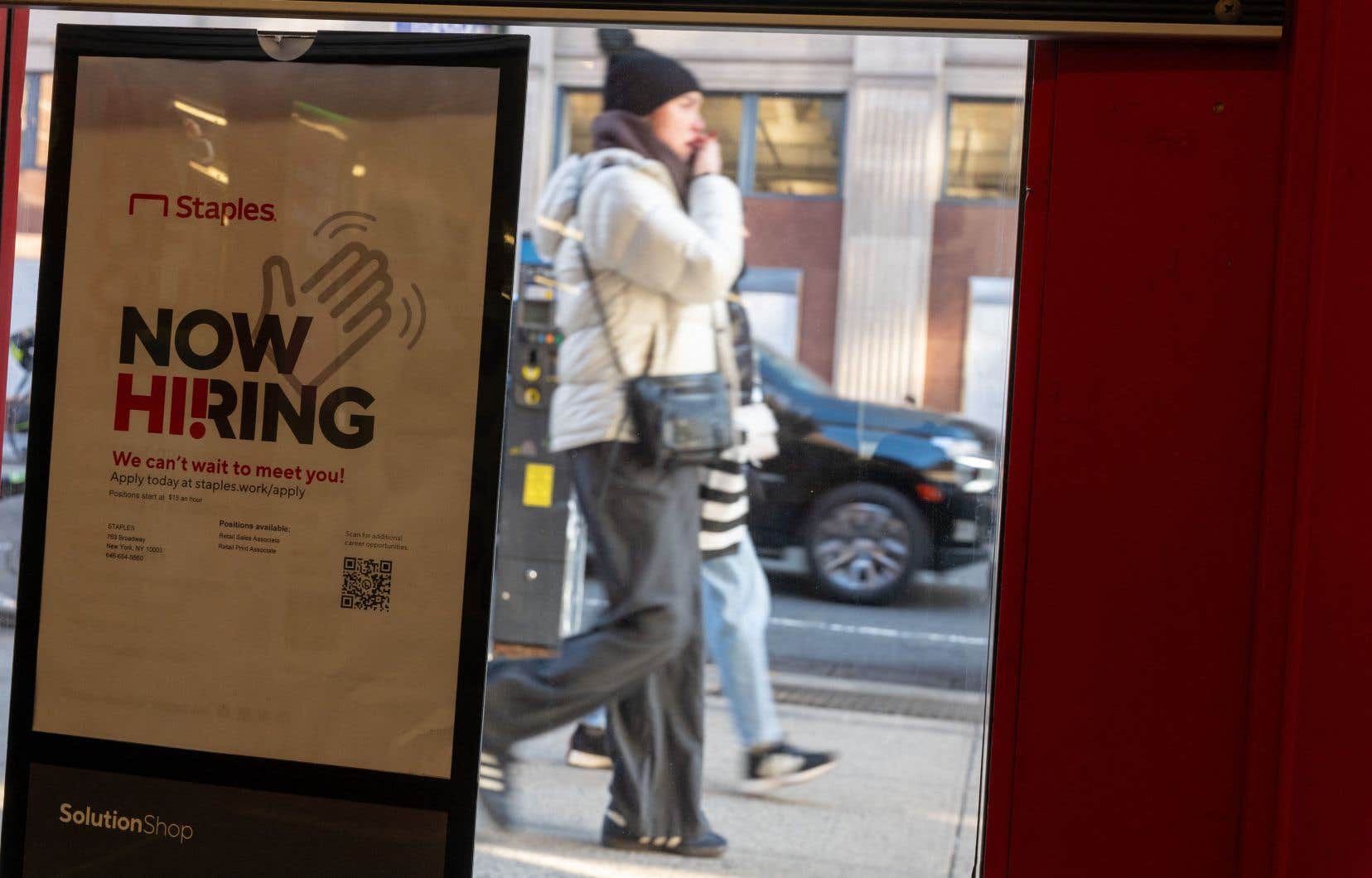New surprise on the employment front in the United States, where job creation has once again exceeded all expectations for the first month of 2024, blessing for President Joe Biden in the middle of the electoral campaign.
In January, 353,000 jobs were created, according to figures released Friday by the Labor Department.
This is twice as much as expected, since analysts anticipated only 175,000 creations, according to the Briefing.com consensus.
And this is up slightly compared to December, for which the data was nevertheless revised upwards, with 333,000 jobs created. Those from November were also revised, and, in total over the last two months of 2023, this represents 126,000 more jobs than initially announced.
The unemployment rate is stable at 3.7%.
Jobs were created “in the professional and business services, health care, retail and social assistance sectors”, but employment declined in the mining sector, extraction in quarries and oil and gas extraction,” detailed the Department of Labor.
For Democratic President Joe Biden, these figures are a godsend, as the electoral campaign for the presidential election in November is launched. Its main Republican candidate, former President Donald Trump, regularly recalls that the unemployment rate was historically low when he himself was in the White House.
“Exceptional”
Job growth in January “was exceptional,” comments Rubeela Farooqi, chief economist for High Frequency Economics, in a note.
She warns, however, that “these data strongly support patience regarding rate cuts” from the American central bank (Fed).
The Fed, in fact, is considering several rate cuts in 2024, which will reduce household access to credit and restore some purchasing power.
Its president Jerome Powell, however, judged on Wednesday “unlikely” to reach by the next meeting, in March, a sufficient “level of confidence” in the trajectory of inflation to begin rate cuts at that time.
He described a “labor market (which) remains tight, but the conditions of supply and demand continue to rebalance”.
And above all, he clarified, “while a year ago, we thought that a certain slowdown in economic activity was necessary” to bring down inflation, “this was not the case” , and, from now on, “we are not seeking to weaken the labor market”.
PCE inflation, the index favored by the Fed and which it wants to reduce to 2%, showed a change in prices excluding energy and food of 2.9% over one year in December, the lowest in almost three years.
Cost reduction
The signals, however, seemed to indicate a slowdown.
Figures from the private sector alone showed a slowdown in hiring and slowed wage growth, according to the monthly ADP / Stanford Lab survey published on Wednesday.
A study by consulting firm Challenger, Gray&Christmas, published Thursday, counted more than 82,000 job cuts announced in January by employers based in the United States.
With cost reduction as the “main driver”, but also “broader economic trends and a strategic shift towards increased automation and the adoption of artificial intelligence in various sectors”, underlined the vice-president of this firm , Andrew Challenger.
And the approach of the presidential election in November pushes companies to anticipate “possible political changes likely to have an impact on their sectors,” he added.
Announcements of layoffs followed one another in January, including the Los Angeles Times which separated more than a fifth of its editorial staff, or the messaging and parcel delivery group UPS which announced the elimination of 12,000 jobs out of the company’s 500,000.
